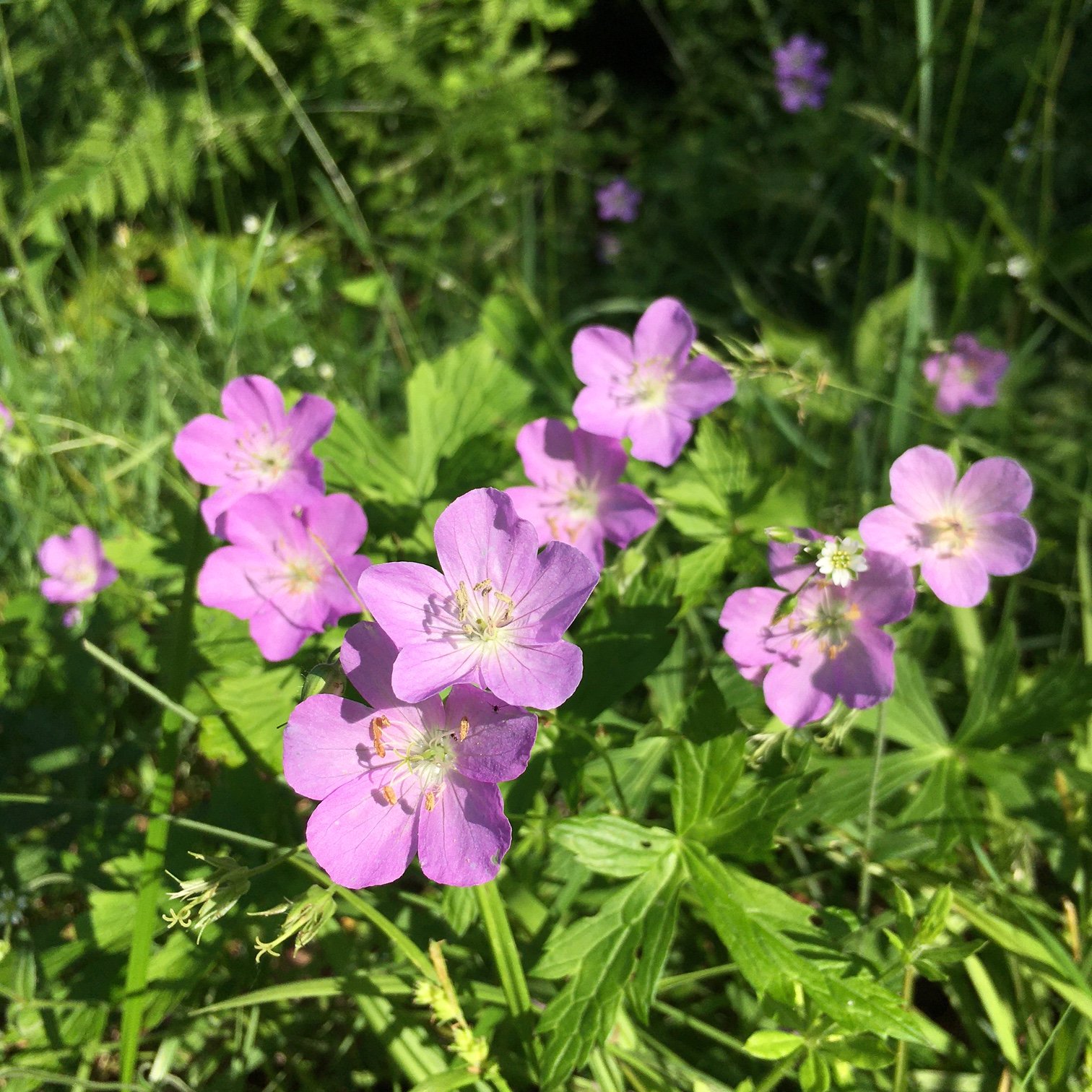
Fall Planting
WHY
Fall weather favors plant establishment.
Plant establishment happens beneath the soil surface. Root systems grow, anchoring the plant in place and enabling the plant to forage for the water and nutrients that it needs for above ground growth.
Unlike cold spring soils, fall soils retain the warmth of summer. Warm soil temperatures and cooler air temperatures favor root growth, making fall an ideal time to plant perennials.
Less watering, fewer weeds.
Generally speaking, rain is more plentiful in fall. But even in a dry fall, the days are shorter and temperatures are cooler, so soils retain moisture longer. In fall, you can expect to water newly transplanted plants no more than once a week. Plus, fewer weeds germinate in the fall, so plants can root in without encroaching weeds.
Get an extra year for free.
Plugs (3” pots) are generally first year plants that won’t flower until the following year. Plant a plug in spring, and you could be waiting over a year for your plants to flower. By planting plugs in fall, you save the effort of nursing small plants through the whole growing season, but you still get large flowering plants the following season. Planting a quart-size plant in the fall will get you the same result as planting a gallon-size plant in spring.
Become an ecological gardener: flip your seasons.
Goodbye fall cleanup. We now are aware that leaving dormant plants standing not only makes for an attractive winter garden, but it provides overwintering sites, nesting habitat, and winter seeds for tons of wildlife. With spring cleanup now added to the list of early season garden chores, it’s helpful to get the bulk of your perennial planting done in fall.
HOW
Allow enough time for plants to root in.
Plant perennials at least six weeks before the ground freezes solid. Locally, in the Hudson Valley and western Connecticut, we recommend planting in mid to late September, though the “growing season” often runs until late November or beyond.
Mulch just before winter.
Refrain from mulching immediately, so that the plant’s roots continue to benefit from sun-warmed soils. Apply mulch in late fall, just before winter or when temperatures are continually below freezing, to help reduce any risk of frost heaving. As a bonus, the mulch will still be in place to help limit weeds from germinating the following spring.
Make your plans in summer.
Dreaming of the garden and ordering plants and seeds is a joyful winter pastime for ALL gardeners. But the best time to plan garden changes or expansions is actually in summer, when you don’t have to visualize the garden, but can actually stand in the middle of it and survey what’s working and what’s not. Mid-season is when gaps appear, flopping plants tell us they’re in a spot that’s too shady or too moist, and awkward combinations—be it color, height, or texture, become obvious. Take a moment in summer to evaluate, then get planting in fall.
BUT
What if we get frost?
Depending on the species and the temperature, fall frosts may nip some of the plant’s above-ground foliage, but it will not damage the roots. Root systems will continue to grow when temperatures are favorable until the ground freezes.
Aren’t plants stressed at the end of the season?
Only if they have been sitting in pots on a bench since spring! Our fall crop is a late crop, timed to be ready specifically for fall planting.
What will the plants look like?
Native plants, especially straight species (not cultivars) take their cues from nature. Even though fall-ready plants are scheduled for fall, some will have flowered already or be changing color. As long as they have a healthy root system, they will handle transplanting without problems.
BEST BETS FOR FALL PLANTING
All perennials and shrubs fare well when planted in fall. But one additional benefit is that fall-established plants resume root growth early in spring and and emerge naturally as soon as weather conditions allow. This is extremely beneficial for two categories of plants: Spring Bloomers and Early Emergers.
Spring Bloomers
Spring Bloomers begin to flower in April and May, and they will produce a more robust flush of flowers if they are established in fall and can start growing early in spring in response to seasonal cues from nature.
Early Emergers
Early emergers are plants that produce new growth in early spring. Some, including sedges, are cool-season growers that grow best during the mild conditions in fall and spring. Others, including Penstemons and Lobelia may be semi-evergreen through winter. All of these plants are well-suited to fall planting.

